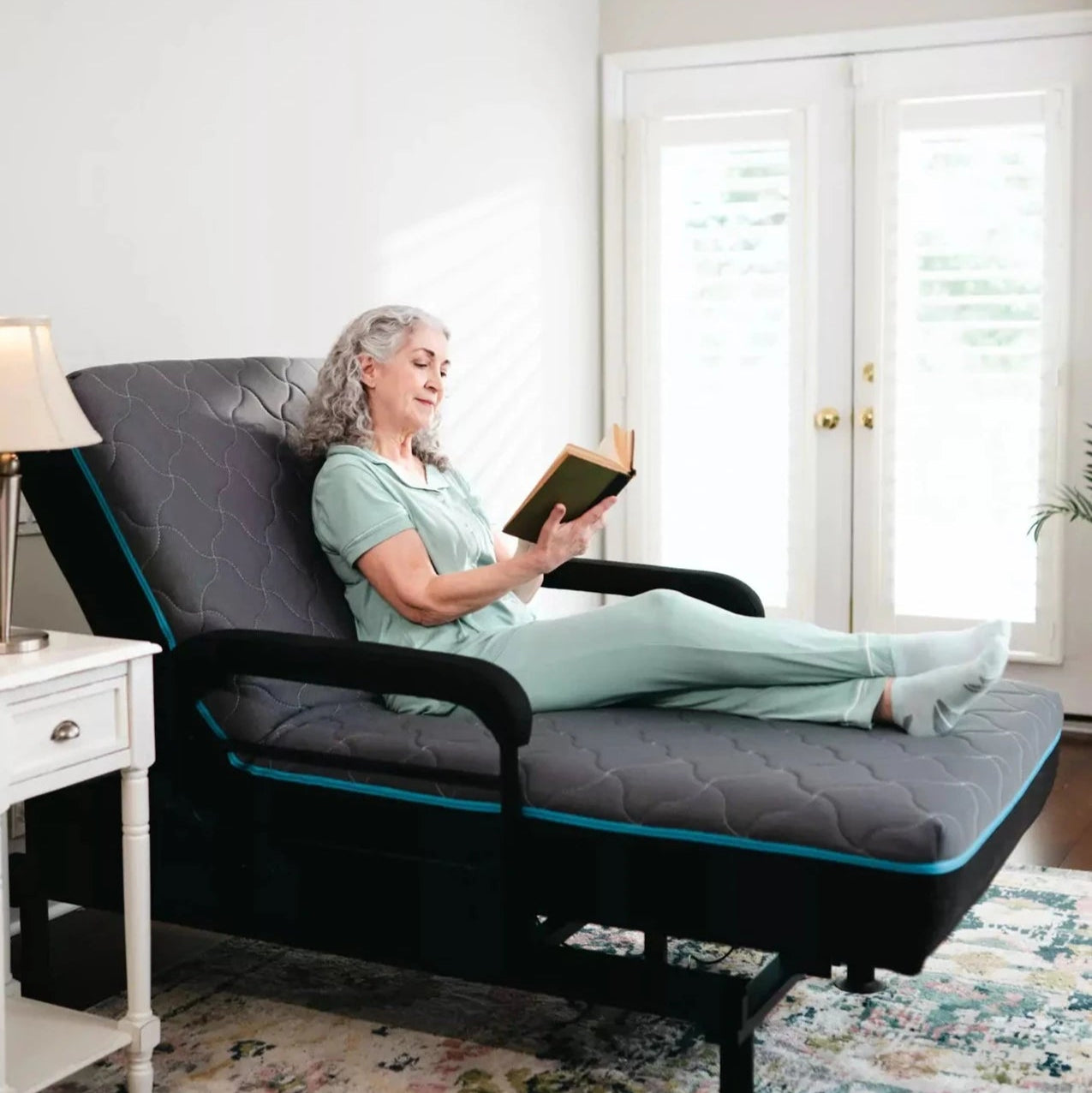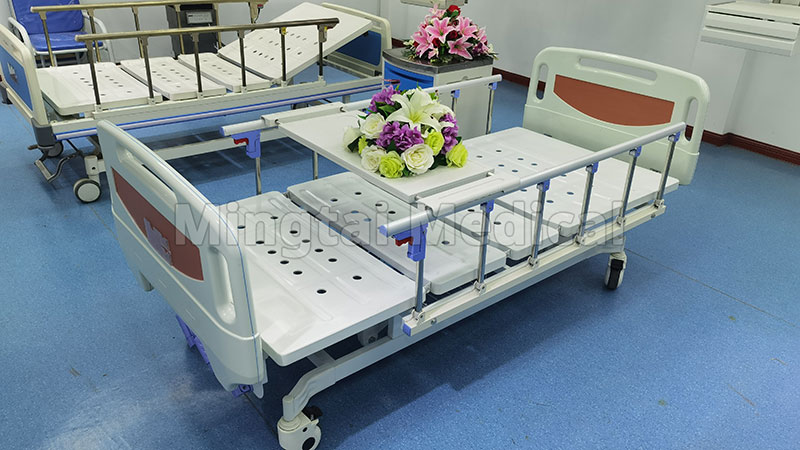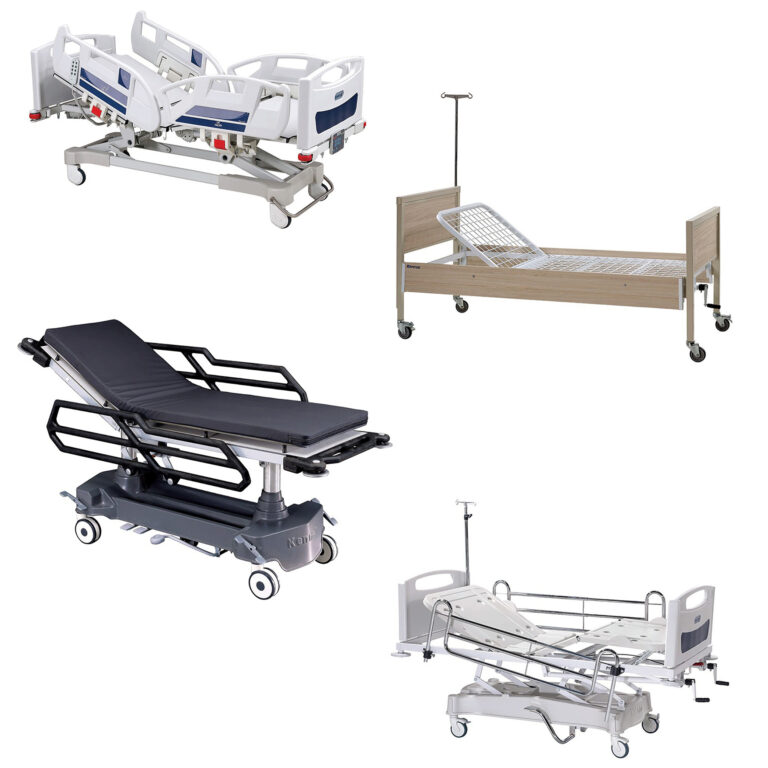Hospital Beds For Home Use Can Be Fun For Everyone
Hospital Beds For Home Use Can Be Fun For Everyone
Blog Article
What Does Hospital Beds For Home Use Do?
Table of ContentsGetting My Hospital Beds For Home Use To WorkNot known Incorrect Statements About Hospital Beds For Home Use 10 Easy Facts About Hospital Beds For Home Use Described5 Simple Techniques For Hospital Beds For Home UseThe 8-Second Trick For Hospital Beds For Home UseThe smart Trick of Hospital Beds For Home Use That Nobody is Talking AboutThe 7-Minute Rule for Hospital Beds For Home Use
There are 3 primary types of healthcare facility beds: guidebook, semi-electric, and fully-electric. These beds utilize hand cranks to change the bed's height and raise and reduce the head and the foot.
Semi-electric beds have an electric motor to raise and reduce the head and foot sections of the bed. Patients and caregivers readjust the placing by pushing buttons making use of a hand necklace. The elevation of the bed is adjusted by hand with a hand crank. Full-electric beds have an electric motor that can elevate the head and foot sections of the bed in addition to the whole height and positioning of the bed.
Hospital Beds For Home Use for Dummies
There are a number of types of healthcare facility beds, each designed to meet particular individual demands. Right here are some typical types: This is the most common type of healthcare facility bed, developed for basic clinical usage.
Reduced to the ground than a common bed. This sort of bed is designed for bigger people, with a larger frame and higher weight capacity than a common bed. This type of bed is made specifically for youngsters, with smaller sizes than a typical bed. Unique features such as full size side rails and anime design.
This sort of bed is created for critically sick individuals who require open tracking and specialized clinical tools such as ventilators and mixture pumps. This type of bed is created for use throughout labor and delivery, with adjustable positions and features to support the mother and child throughout the birth procedure.
The Ultimate Guide To Hospital Beds For Home Use
Numerous feature and the accessories perform broadening grip to various components of the vertebra and the extremities without moving the body. These are simply a couple of examples of the kinds of healthcare facility beds readily available. The specific sort of bed used will depend upon the person's problem, clinical demands, and various other factors.
Here is things you need to know. A one-function medical facility bed is a medical bed that allows a person to move only the head or foot area up or down. A 2 feature healthcare facility bed commonly describes a sort of medical bed that has two adjustable functions to help patients in hospitals or care centers.

An Unbiased View of Hospital Beds For Home Use
A 7-function ICU bed is a kind of medical bed that gives a number of flexible features to support critically sick people in a critical care unit (ICU) (hospital beds for home use). The 7 features generally consist of: Back-rest modification: The backrest can be readjusted to numerous angles to help the person sit up or relax comfortably
Height change: more helpful hints The bed can be elevated or reduced to make it much easier for individuals to obtain in and out of bed, and check here for caregivers to offer treatment. Trendelenburg position: The whole bed can be slanted to advertise blood flow and blood circulation in the body. Reverse Trendelenburg position: The bed can also be slanted in the contrary instructions to advertise blood flow and flow in the upper body.
While even more economical than electric versions, these beds call for physical initiative for changes. The main advantages of manual beds are their cost and dependability, as they don't count on electrical energy. Nonetheless, the need for hands-on effort can be a constraint in scenarios where fast changes are essential or where caretakers face physical challenges.
Hospital Beds For Home Use Can Be Fun For Anyone
Semi-electric healthcare facility beds offer an equilibrium of manual and electric controls. These beds supply a perfect center ground in between manual and completely electrical options, using convenience of use without the complete price of electrical versions.
Semi-electric beds are appropriate for individuals that need moderate modifications to the head and foot areas but can handle without frequent height modifications. This makes them a cost-effective service for those looking for convenience and convenience without the demand for constant repositioning. Completely electrical hospital beds feature electrical controls for smooth adjustments to the elevation, head, and foot areas.
Specialty health center beds, such as ICU beds, lasting care beds, and bariatric beds, are very carefully created to resolve specific clinical demands. These beds supply customized treatment for varied individual groups, enhancing both results and convenience. In the complying with areas, we will certainly discover the main types of specialty medical facility beds, describing their specific benefits and applications.
With years of experience in producing electrical direct actuators - hospital beds for home use and close partnership with the medical care market, TiMOTION is well-positioned to offer trustworthy health care services. Our up and down integrated business takes care of every step of the production procedure, from layout to actuator setting up, ensuring we deliver extraordinary value and personalized solutions customized to your specific requirements
What Does Hospital Beds For Home Use Do?

To find out more about integrating these technologies right into your items, contact us today. Further reading:.
Data is sourced from the Medicare Price Record.

Hospital Beds For Home Use Things To Know Before You Buy
A hospital bed is a bed created particularly for clinical objectives. It is not only a location for patients to rest, however likewise a system for clinical operations. Unlike ordinary home beds, health center beds usually have adjustable functions, which can assist in medical personnel to make numerous changes according to the requirements of individuals, such as transforming the elevation, disposition, and assistance angle of the back and legs of the bed.
Report this page